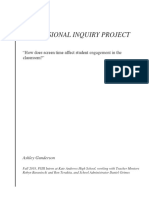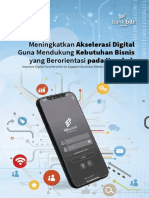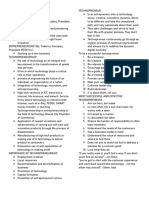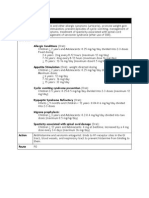0% found this document useful (0 votes)
12 views10 pagesScreen Time
This research investigates the impact of screen time on the academic performance of female students in higher education in Pakistan, revealing a weak positive correlation between screen time and Cumulative Grade Point Average (CGPA). The study emphasizes the need for interventions to promote healthier screen time habits and suggests incorporating digital literacy into educational curricula. It calls for further research to explore additional factors affecting this relationship and to develop effective strategies for enhancing student learning experiences.
Uploaded by
Surayah YayaCopyright
© © All Rights Reserved
We take content rights seriously. If you suspect this is your content, claim it here.
Available Formats
Download as PDF, TXT or read online on Scribd
0% found this document useful (0 votes)
12 views10 pagesScreen Time
This research investigates the impact of screen time on the academic performance of female students in higher education in Pakistan, revealing a weak positive correlation between screen time and Cumulative Grade Point Average (CGPA). The study emphasizes the need for interventions to promote healthier screen time habits and suggests incorporating digital literacy into educational curricula. It calls for further research to explore additional factors affecting this relationship and to develop effective strategies for enhancing student learning experiences.
Uploaded by
Surayah YayaCopyright
© © All Rights Reserved
We take content rights seriously. If you suspect this is your content, claim it here.
Available Formats
Download as PDF, TXT or read online on Scribd
/ 10































































































